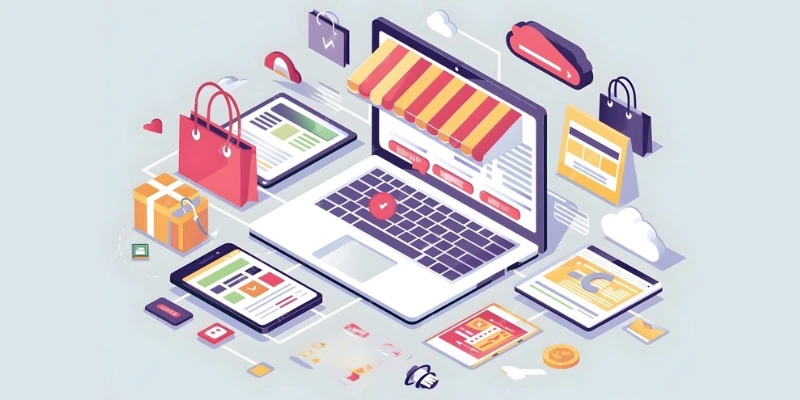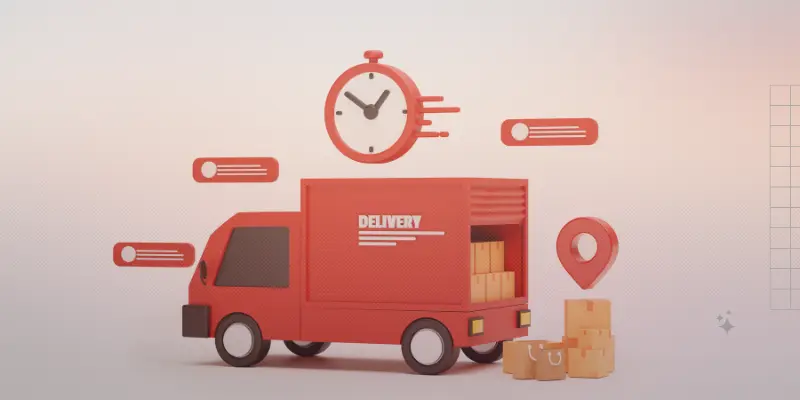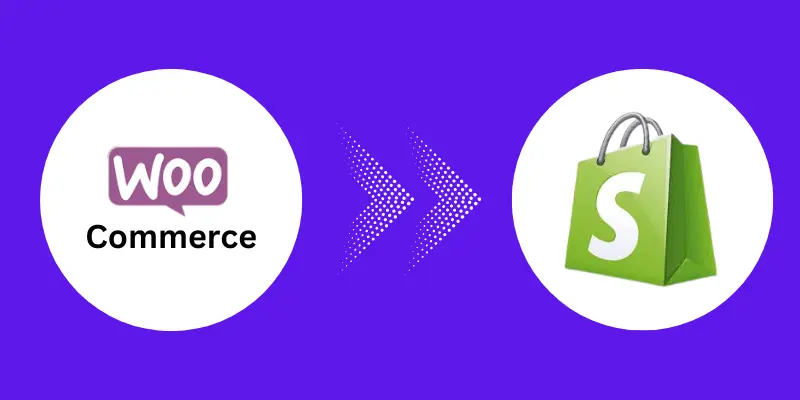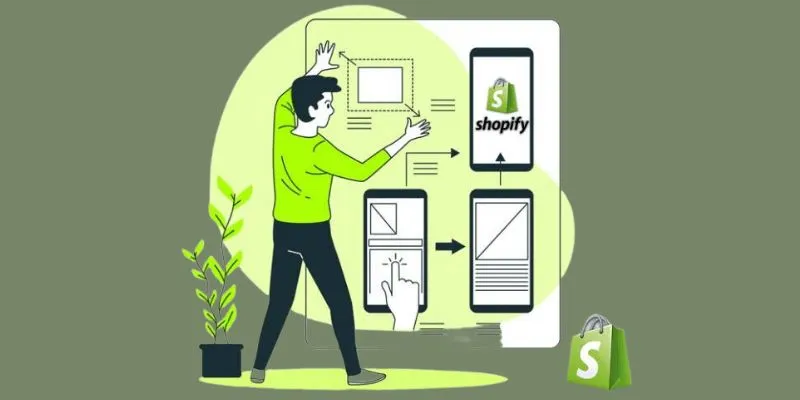Shopify is a solid platform for building personalized and fully functioning e-commerce stores and transferring it to clients once it's ready. Transferring a Shopify store will require certain preparations, like creating the billing details, removing testing data, and then analyzing the store's settings and options. Moving it could help you in various ways, including making recurring revenue, building confidence with clients, demonstrating your talents, and attracting new clients.
During the Shopify ecommerce development services, the typical practice is to develop and test different features before launching the final version. There may be an occasion when you have to move the store you are developing into a live store.
In this post, we'll talk about building and smoothly transferring Shopify stores.
So, let’s get started.
What Is Shopify?
Shopify is an online marketplace that allows anyone to begin an online business without hassle. It offers an array of tools for managing, building, and developing online shops for sale. By 2024, Shopify had become the most prominent e-commerce platform that lets you offer products for purchase and make transactions electronically and physically.
Shopify is a SaaS (software-as-a-service) sales platform offering in-build tools to grow and succeed in the e-commerce industry. It was launched in 2006, and Shopify has become one of the most well-known e-commerce website builders thanks to its simple interface and access to thousands of functions.
Whether a new company owner or a seasoned large corporation, the Shopify online store offers everything you need at a single location. The store comes full of business-related tools, including inventory and store control, multiple payment gateways, shipping options, marketing, customer service, and reporting.
Key Benefits Of Using Shopify For Ecommerce Store Development
Shopify allows businesses to run their own online stores. We've provided some main advantages that can make Shopify an excellent option for e-commerce businesses.
Easily Accessible E-Commerce Platform
Shopify is a user-friendly platform; you can use it even if you need to gain programming skills. This is why business owners are in love with Shopify to the greatest extent. The user-friendly interface is easy to use for things like adding products, managing inventory, taking care of orders, and creating discount coupons.
Shopify's drag-and-drop editing tool allows users to alter the layout of their store without having to write complicated codes. Additionally, the platform provides web hosting. Thus, entrepreneurs can obtain the technical infrastructure to establish their online store through the platform.
Customization
Shopify store development services offer a range of pre-designed themes. However, the user has complete control over the appearance and style of your shop. The themes that you can customize look appealing and are also mobile-friendly. They provide a solid basis for your branding. The ability to customize Shopify themes using its editor is built into the platform. Additionally, you can create your website by contacting the Shopify developer.
Mobile Responsiveness
Nowadays, smartphones are used in a wide range of ways. To adapt to this modern technology, stores need to be mobile-friendly and operate perfectly across all gadgets. Shopify is mobile-responsive and can automatically alter its layout so that it displays perfectly across tablets, desktops, and smartphones. Therefore, Shopify store owners can provide users with a seamless experience.
Scalability
Shopify online stores can easily be adapted when the company expands. It also offers various subscription options to suit all kinds of businesses. Online store owners can effortlessly change their plans as their businesses grow to take advantage of new options and functions. Thus, moving to a new system is not required as the company grows.
Secure Hosting
Shopify takes care of the technical side, allowing you to focus on managing your company. It includes server maintenance, security upgrades, and data backups. The platform uses the latest security standards to guard your customers' information and financial transactions. So, you can run your business without worrying about the security of your online store.
Marketing Tools
Shopify has built-in marketing tools to assist you in reaching your audience's interests and advertising your services. It allows you to create emails for marketing, use discounts and offers, and create gift certificates that encourage purchases. Shopify can also be integrated with different social media sites. So, you'll be able to effortlessly link your store with social media and connect to potential customers with social media integration.
Payment Options
It is possible to integrate Shopify with numerous well-known payment processors. Thus, shoppers can select the payment method they prefer at checkout. This flexibility increases trust and ease of access, which in turn results in a higher rate of conversion. In addition, Shopify payments eliminate the requirement for an additional merchant account for the majority of businesses and make it simpler to set up.
Analytics And Reporting
Data is essential to knowing your customers' needs and making educated business decision-making. Shopify provides complete analytics and reports to monitor the performance of your store. It provides valuable insight into customer behavior, finding top-selling products, examining traffic sources, and tracking important metrics. In this way, you will be able to effectively improve your strategies for marketing products and offerings as well as the overall experience of your store.
Reliable Customer Support
Shopify provides 24/7 customer service through various live chat, phone, and email channels. Support staff are knowledgeable and will assist you in solving technical issues swiftly. They can also help you with platform questions and advise on the most effective practices to run a successful online business. This support system will ensure the assistance you need whenever you need help.
Reasons To Transfer a Shopify Development Store
Many reasons could lead to the necessity of transferring the Shopify Development store into an operational environment. Here are some scenarios that could be common:
Changes In Business Requirements
If your company and business grow, it may be necessary to introduce additional features or change your design or the store's layout. The transfer of the development store permits implementing these changes without impacting your live store's operation.
Scaling The Business
As your company grows, you may outgrow the capabilities of your existing store. Moving to live stores equipped with the latest technology ensures your website can handle increased traffic and orders.
Redesigning Or Rebranding
If you are planning to redesign your store or rebranding effort, the transfer of your store for development to conform to your new branding identity is vital. It ensures the sameness and seamless experience for your clients.
Testing New Features
Shopify development company frequently use the store to experiment with and refine different features and integrations. When these functions are prepared to go into production, moving the store lets you offer a better experience for your clients.
Steps To Build a Shopify Development Store
To start on the Shopify journey, head to the Shopify site and join for a no-cost test. With their user-friendly platform and numerous support tools, you'll be equipped with everything you need to build and open your store swiftly and easily.
Login To Get a Shopify Account
Making an online store using Shopify is simple. To begin, you must fill in the form to sign up with your company details. Then, you'll have to input your email address, set up a password, and create a unique brand name that's not already available in the marketplace.
When you've completed this process, you'll be required to provide some more information about yourself. This isn't required, but it will help Shopify offer individualized suggestions and grow your company. You can also not bother with this if you're only looking into Shopify's platform.
The next step is to fill in your address for commercial use and the contact information that will be used for shipping and other related business purposes. After you've entered this data, you can begin customizing your store online.
Also Read: How Much Does It Cost To Build a Shopify Store
Finish The Shopify Store's Fundamentals
When you open the Shopify shop, an extensive menu will appear at the bottom left corner of the display. The menu includes essential links to different options and tools, such as customers, orders, and customers.
In the left-hand corner of the web page, you'll see a link that says "Settings." The button gives you, the user, a variety of choices. These include the option to alter your store's name, change its time zone, and pick your preferred currency, as well as other customizable settings.
Select The Shopify Theme
Shopify templates are designed by experts that define your web store's overall design and experience. They determine how customers perceive your shop, such as the layout, typeface colors, layout, and navigation.
Shopify provides a variety of premium and free themes. Each theme has its own features and personalization options that allow you to design an attractive storefront without the need for technical skills. While selecting a theme, you must consider a variety of elements to ensure it meets your business needs and also provides an excellent customer experience.
Design Collections And Products
The next step is to create products and organize them into collections for your store. Go to "Products" on the Shopify Dashboards and select "Add Product." Then, you can check the product's status to confirm that it's in "Active" mode and then click "Save" to publish it to your customers. When listing your products, it is recommended that you categorize them into collections, such as special collections and seasonal collections, or by category to allow your customers to find and read them.
Install Shopify Essential Apps
Shopify mobile app development is software from third parties that work with the Shopify platform to offer more features and functions. Shopify's app store offers many apps that satisfy different business needs, such as page creation, marketing, accounting, logistics, inventory management, and more. These apps allow you to tailor your shop's website to fulfill particular requirements and objectives and make your company more profitable and efficient.
Create Your Preferred Payment Method
A payment gateway is crucial for processing transactions through Your Shopify store. To set up payment options, you must access the payment service "settings" and complete the account setup by entering all the necessary details, such as a description of the statement charges, transaction fees, and the accepted cards.
Ensure that checkout, shipping, and account settings are adjusted to improve the customer experience. Legal sites like Refund policy, Privacy Policy, and Terms of Service should be set by the legal setting. Please fill in all the required fields before clicking "Complete the account setup."
Incorporate The Domain Name For The Store
When you start building your store on Shopify, you'll likely be provided with a default domain, which looks like "your-store-name.myshopify.com." Suppose you'd like to own a customized URL like "yourstorename.com." In that case, look into other possibilities for getting a custom domain. The process could include researching hosting services or purchasing domains directly through Shopify.
Go Live
Once you've reviewed the final elements of your website, such as general information, location of business, customer notification, deliveries, shipping, and taxes, your site is ready to go live!
Steps To Transfer a Shopify Development Store
The Shopify development store can be described as an environment where you can test different designs, themes, and modifications without impacting the live store. After the development stage, moving the store is essential to making changes available to the clients. Transferring the Shopify development store into an actual store will require a methodical approach. Follow these steps to ensure an efficient transfer.
Backup Your Development Store
Before initiating the transfer process, make a backup copy of the development store. This will ensure that you are able to backup everything you have set up and the data should any issue occur during the transfer.
Create a New Store
Set up a Shopify store using a program compatible with your company's needs. The new store will function as a live-based environment.
Export And Import Data
The necessary information, such as customers, product order information, and settings, should be exported from the development store. After that, you can import the data to your live store. Shopify offers resources and tools to assist you through the migration process.
Customize The New Store
After importing the information, you can customize your new store to match your preferred style, layout, and brand. Modify the theme, include adjustments, and incorporate the necessary applications or third-party apps.
Review And Test
Examine thoroughly and verify the features and experience of the store's new features. Verify that the integrations and features function as you expect. Adjust as needed to create a seamless customer experience.
Go Live
After all tests and reviews are completed, the store is ready to go live. Make your online store available. Transfer your domain's address to the store you want to create, and ensure your URLs are correctly installed. Check your settings, payment gateways, and shipping options to ensure everything functions correctly.
Top Common Mistakes When Building Shopify Store
Take a look at the most frequent mistakes that store managers typically make when building their first Shopify store.
Color Scheme Is Not Consistent With The Theme
The color used in designing Shopify stores creates the initial impression of the brand. A lack of consistency could cause confusion and unorganized design. When colors are utilized inconsistently, it is difficult for users to discern the essential elements of the site. Therefore, it is essential to consider the colors when designing your store's appearance.
Not Taking Into Account Mobile Users
A theme that is not mobile-responsive can negatively affect the user experience on your site. It could cause users who visit the site via smartphones to experience difficulties when navigating the site or reading your content, leading to frustration and a higher bounce rate. Therefore, selecting a theme that can be optimized for any screen size and provides a seamless browsing experience for all visitors is essential.
Use Unoptimized Visuals
Utilizing unoptimized images when creating Shopify stores harms the overall customer experience. The large image size and lengthy loading times may create unhappy customers and a higher bounce rate.
It is essential to optimize images to work with Shopify store design and development prior to uploading them so that they can improve the website's speed and provide a smooth shopping experience. That's why it is important to create high-quality videos and images to promote your items prior to putting them in your shops.
Best Practices For Transferring a Shopify Development Store
To make sure that the transfer goes smoothly and to minimize the risk of problems, you should consider these top practices:
Contact Stakeholders
Inform all the relevant parties about the transfer process. This includes your staff, suppliers, customers, and partners. Inform them of the timeframe and possible downtime so that you can manage expectations.
Ensure Data Accuracy
When transferring data, be sure to pay with accuracy. Check that all information about the product, customer, and order is correctly transferred. Make sure you have a thorough check to prevent any issues.
Test Functionality And User Experience
Tests are essential to discovering and rectifying issues before moving into production. Examine the capabilities of all aspects, such as product pages and checkout processes, payment gateways, and emails for notifications. Imagine yourself as the customer and provide an easy, seamless user experience.
Optimize For SEO
When you move your store's development to a live site, use the opportunity to improve your store to be search engine friendly. Conduct keyword research and improve the meta tags, URLs, and headings to increase your store's search visibility.
Conclusion
Transferring and building a Shopify store is easy and can be extremely beneficial for business owners. Moving the functionality of a Shopify developing store into a live store environment is vital for making your shop accessible to the potential public. This process can guarantee an efficient transfer and also receive a regular fee from Shopify. We hope this article has provided an uncluttered and precise description of the process intended to help novice and veteran Shopify Partners. Check the most recent Shopify document for any changes or other changes in the process.
With a structured strategy backed by top methods, you can ensure a seamless transition and preserve the quality of your Shopify store. Be aware of the motives for moving, the steps to take, and the significance of testing and optimizing to ensure a smooth transfer.












Share this blog